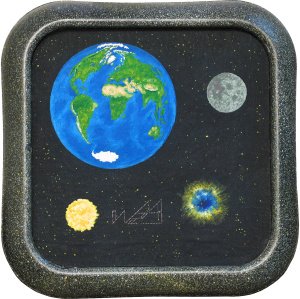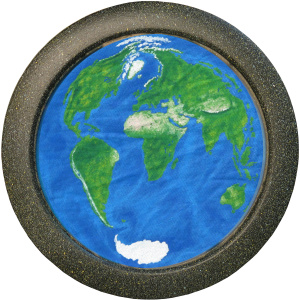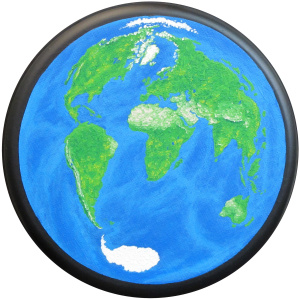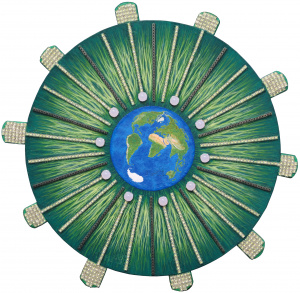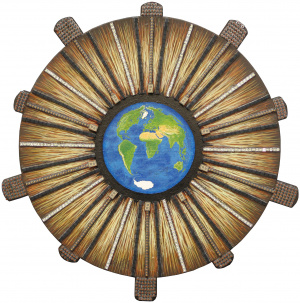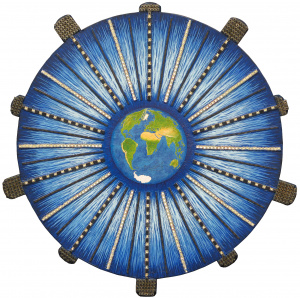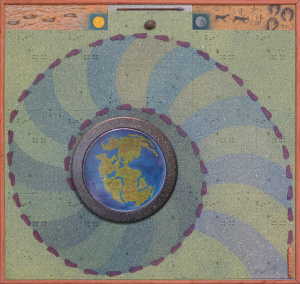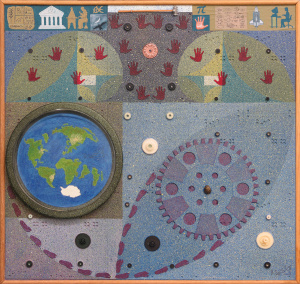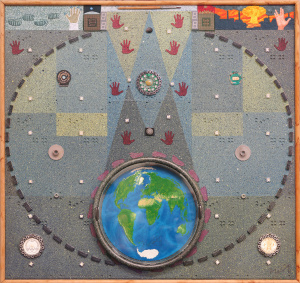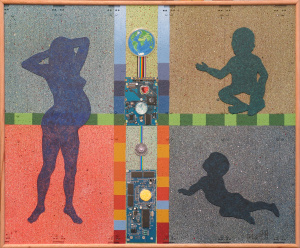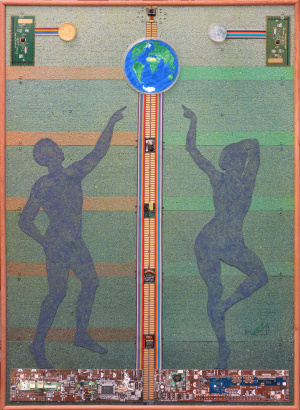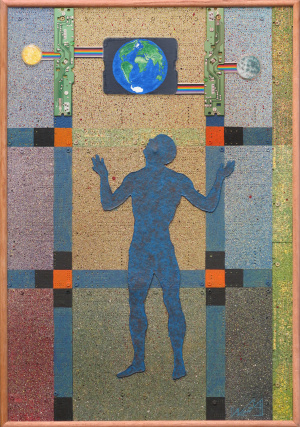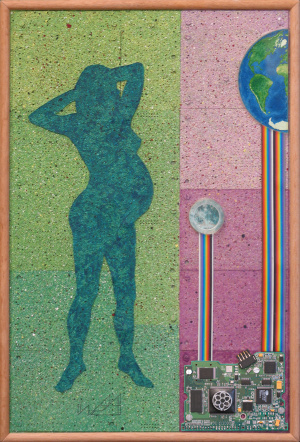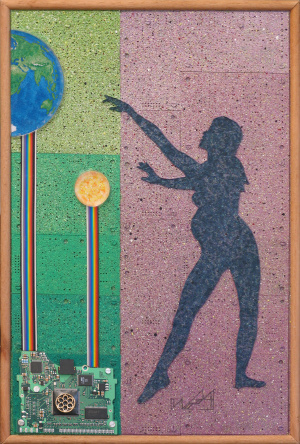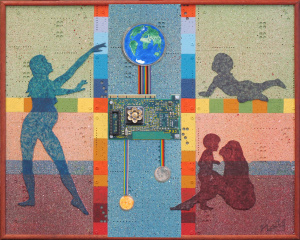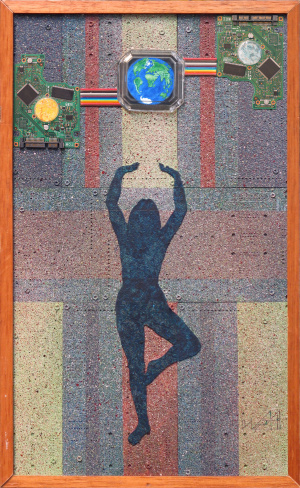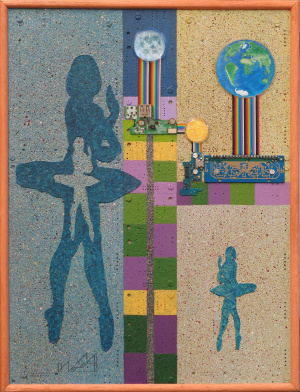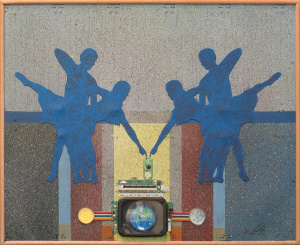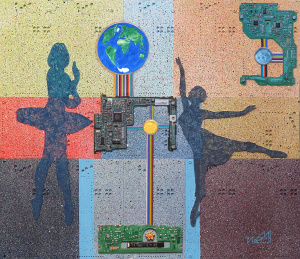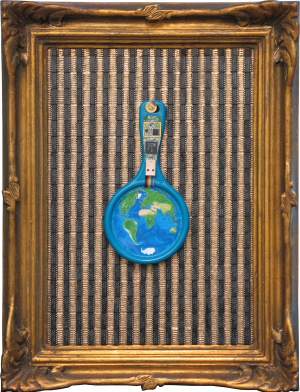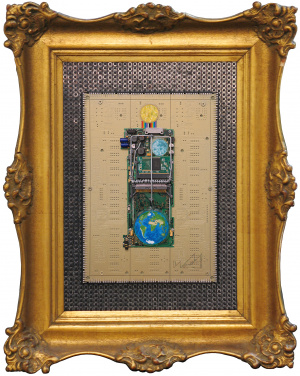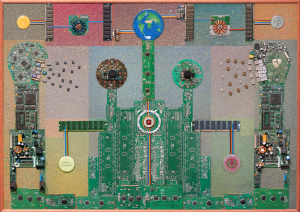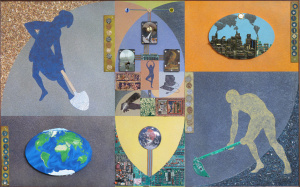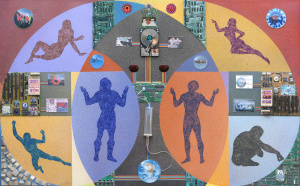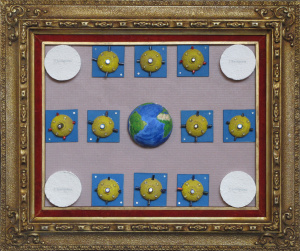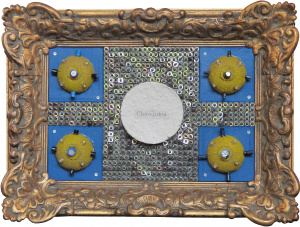CRISTINE DE PIZAN – A PRIMEIRA ESCRITORA FEMINISTA
Cristine de Pizan é a primeira escritora e poeta e que viveu comercialmente de seu trabalho, influenciou gerações de filósofos e plantou a semente da luta contra o machismo nas esferas intelectuais europeias.
Link: https://abca.art.br/wp-content/uploads/2023/11/Arte-Critica-ed-59-Walter-Miranda.pdf
Walter Miranda – ABCA/São Paulo
Em minhas pesquisas sobre a atuação das mulheres ao longo da história do desenvolvimento do pensamento humano, encontrei diversas mulheres fantásticas e excepcionais. Já escrevi sobre algumas delas desde a Antiguidade até a Idade Média[1]. Entretanto, uma se destacou por ser uma escritora que viveu do fruto de seu trabalho e que deixava claro que as mulheres são tão capazes e inteligentes quanto os homens. Italiana, da cidade de Veneza, Cristine nasceu em 1364. Seu pai, Tommaso di Bevenuto da Pizzano, lecionava na Universidade de Bolonha quando foi convidado, em 1369, para ser astrólogo e médico do rei francês Carlos V. Assim, ela mudou com a família para Paris e passou o resto de sua vida na França. Sua formação intelectual foi obtida por meio dos ensinamentos de seu pai, pelo compartilhamento da educação humanista dada às princesas e pelo acesso a toda a biblioteca real composta por mais de 900 exemplares.
Com quinze anos de idade, casou-se com Etienne de Castel, um nobre e conselheiro do rei francês, que também incentivava Cristine a aprofundar seus estudos. Foi um casamento feliz. Com a morte de Carlos V em 1380, Tommaso perdeu prestigio na corte e viu seus salários reduzidos drasticamente, adoecendo logo em seguida e vindo a falecer em 1387. Em 1390, Etienne também faleceu acometido por uma epidemia enquanto acompanhava a comitiva real na cidade de Beauvais. Cristine ficou afastada da corte real, sozinha e responsável por duas filhas, um filho, sua mãe e uma sobrinha. Não bastasse essa mudança social, ela precisou enfrentar batalhas jurídicas para manter alguns bens herdados e reaver outros que lhe foram tomados por credores de seu marido. Contudo, naquela época, as viúvas pertencentes à aristocracia tinham certa liberdade que Cristine usou para decidir não casar novamente, aprofundar seus estudos e, a fim de sustentar sua família por conta própria, resolveu aplicar seus conhecimentos para escrever poemas e vendê-los para as damas da corte com as quais ainda mantinha contato. Aos poucos tornou-se conhecida como poeta virtuosa devido à qualidade literária de seus poemas[2].
Com o passar dos anos, ela ganhou tanto respeito e notoriedade que, além de escrever, passou a editar e publicar seus livros, bem como os de outros autores. Ela coordenava a tarefa dos copistas dos textos, orientava os ilustradores, controlava o número de cópias de cada manuscrito e a qualidade final deles. Como estratégia de divulgação, ela preparava pequenos resumos de prováveis obras ou fazia compilações de seus textos para presentear membros da nobreza e conseguir novas encomendas, fatores que por fim a tornaram famosa e rica ainda em vida. Como marca pessoal, assinava suas publicações com um anagrama das primeiras letras de Cristo em grego (Xpine) e Pizan, uma maneira de afrancesar seu nome e ao mesmo tempo homenagear seu pai.
Figura 1 – Assinatura de Cristine em carta para a rainha da França - British Library MS Harley 4431 - Imagem em domínio público.
Em 1394, por sugestão das noras do rei francês, Cristine escreveu a obra intitulada Le Le Livre des Cent Ballades (O Livro das Cem Baladas) que obteve ótima aceitação. Nele, ela aborda poeticamente suas experiências cotidianas e a depressão que sofreu após as mortes do pai e do marido. Em um de seus textos autobiográficos, Le Livre de l’Advision Cristine (O Livro de Conselhos de Cristine), ela relata que a deusa Philosophiae lhe consolou sobre suas vicissitudes explicando que se ela não tivesse ficado viúva, certamente continuaria apenas cuidando dos afazeres domésticos.
Figura 2 - Cristine escrevendo o Livro das cem Baladas - British Library MS Harley 4431 - Imagem em domínio público.
Na obra Le Livre de Mutation de Fortune (O Livro da Transformação da Fortuna), ela afirmou que após as mortes do pai e do marido, sua fortuna foi ter sido educada desde pequena, fato que a transformou socialmente no “equivalente a um homem”, pois ela passou a ser respeitada exercendo atividades que antes eram exclusivamente masculinas[3]. Com o passar do tempo, ela ganhou respeito social e passou a escrever textos de cunho filosófico, moral, educacional, político, militar e trivial. Sua maior preocupação era com a condição social da mulher em uma sociedade misógina. Ela afirmava que as mães tinham grande importância na educação moral e religiosa de seus filhos e, por isso, exerciam grande influência no meio social. Em 1399, ela publicou em versos a obra L’Epistre au dieu d’Amours (A Carta ao deus do Amor) em que Cupido critica o preconceito social e as maledicências contra as mulheres, um tema que Cristine abordará com recorrência e pertinácia em seus textos.
Por volta de 1400, Jean de Montreuil (1354-1418), teólogo, filósofo, chefe de estado e tradutor francês, divulgou um texto elogiando o Le Roman de la Rose (O Romance da Rosa) cuja primeira parte foi escrita por volta de 1225 por Guillaume de Lorris (c. 1200-1240) e a segunda completada entre 1265 e 1278 por Jean Clopinel de Meung (1240-c. 1305). A parte de Lorris narra de forma cortês o sonho de um poeta que observa uma flor em seu jardim, alegoricamente a vê como uma mulher e a transforma em um objeto de desejo; já a parte de Meung transforma a mulher em um mero objeto sexual com argumentos típicos do comportamento masculino e seu desprezo pelo universo feminino. O manuscrito, escrito em versos, obteve grande sucesso entre os intelectuais da época e foi caracterizado como filosófico por alguns deles devido à sua forma literária elegante e referências a autores clássicos tais como Platão, Aristóteles, Teofrasto, Cícero, Horácio, Boécio, Alain de Lille, Ovídio, Alhazen etc.[4]
Figura 3 - Roman de la Rose Bibliothèque nationale de France, ms 25526 - Imagem em domínio público.
Sentindo-se ofendida e incomodada, em fevereiro de 1401, Cristine enviou uma carta a Isabel da Baviera, rainha da França, reclamando do teor do romance. Posteriormente, ela escreveu uma carta a Jean, também aberta à comunidade literária de Paris, criticando o aspecto misógino e obceno do Romance da Rosa. Como sua carta era aberta a todos, outros intelectuais da cidade resolveram opinar a respeito da controvérsia criada por Cristine e ela passou a trocar cartas também com os irmãos Gontier Col (c. 1350-1418) e Pierre Col (?-1418), ambos intelectuais, teólogos, diplomatas e nobres franceses. Nas cartas, Cristine reconheceu a qualidade poética do romance, de difícil leitura porque faz uso de referências literárias e filosóficas complexas, mas afirmou que uma obra séria precisa redundar no bem, pois a seriedade de um trabalho literário depende do impacto produzido na mente de seus leitores. Portanto, para ela, o Romance da Rosa se caracteriza por ser uma obra ociosa. A competência de Cristine em argumentar com equidade contra os irmãos Col e Jean de Montreuil, gerou uma rusga intelectual a ponto de Gontier tentar forçá-la a confessar seu erro para que ele lhe perdoasse e lhe desse uma penitência leve[5]. Cristine não se intimidou e preparou um dossiê contendo cópias da troca de correspondência com seus oponentes. Ela iniciou o dossiê com uma carta intitulada Escript la Veille de la Chandeleur1401 (Escrito na Véspera da Candelária 1401) explicando seus motivos para se envolver naquela polêmica e dedicando o dossiê à rainha francesa. A data do dossiê é 1º de fevereiro de 1401, véspera da comemoração de Nossa Senhora da Candelária e foi feito em duas vias, uma enviada à rainha e uma cópia enviada ao reitor de Paris, Guillaume de Tignonville, que já havia condenado publicamente o Romance.
Figura 4 - Cristine entregando dossiê à rainha da França. British Library MS Harley 4431 - Imagem em domínio público.
Empenhada em sua epopeia filosófica e literária, Cristine continuou a expressar suas opiniões de forma erudita e sapiente, enfatizando com vivacidade a desigual condição da mulher na sociedade. Sua participação nesse debate filosófico lhe proporcionou grande respeito entre os intelectuais contemporâneos a ponto de ter o apoio indireto do respeitadíssimo Jean Charlier de Gerson (1363-1429), teólogo reformador apelidado de Doctor Christianissimus, educador, escritor, poeta e chanceler da Universidade de Paris[6]; de Guillaume de Tignonville (?-1414), conselheiro do rei Carlos VI, reitor de Paris e primeiro presidente do parlamento de Paris[7]; e de Jean II le Maingre (1366-1421), mais conhecido como Marechal Boucicaut[8], um militar francês que em 1399 fundou a ordem da cavalaria denominada L'Ordre de la Dame Blanche à l'écu Vert (A Ordem da Dama Branca com o Escudo Verde) em defesa das mulheres que sofriam injustiças sociais e trabalhavam para homens poderosos que, por sua força e poder usurpavam suas honras, bens e terras herdadas. A Ordem também protegia mulheres cujos maridos estavam ausentes ou mortos devido a guerras ou outras razões.
A troca de cartas entre Jean de Montreuil e os irmãos Gontier e Pierre Col, de um lado, e Cristine e Jean de Gerson, de outro, ficou caracterizado como o primeiro debate filosófico público e, a partir de então, por toda a Europa nas universidades e nos meios aristocráticos, surgiu o debate filosófico conhecido como La Querelle des Femmes (A Querela das Mulheres) em que alguns homens e mulheres contestavam a misoginia e o lugar da mulher na sociedade. Cristine afirmava que as mulheres não ocupavam o mesmo espaço profissional e intelectual masculino porque não tinham o mesmo acesso ao estudo e ao conhecimento que os homens tinham. Para ela, a superioridade ou inferioridade entre homens e mulheres não residia no sexo, mas nos defeitos e virtudes de cada um de acordo com sua formação pessoal e social. Provavelmente, o debate se encerrou devido às questões políticas e bélicas enfrentadas pela França na época.
Em 1404, sob encomenda do Duque Filipe da Borgonha, ela publicou a obra biográfica Le Livre des Faits et Bons Moeurs du Sage Roi Charles V (O Livro dos Fatos e Boas Maneiras do Sábio Rei Carlos V) contando a história da vida do rei. Nele ela usou a sabedoria de Carlos V para criticar a degradação do reino durante a guerra civil francesa (1407-1435) entre os Armagnacs e os Borgonheses e usou o exemplo do rei para as futuras gerações da corte e de nobres[9].
Poucos anos após a querela, Cristine tomou conhecimento das duas partes do texto traduzido e publicado, por volta de 1390, por Jean le Févre de Lesson (c. 1320-1380) intitulado Les Lamentations de Matheolus et le Livre de Leesce (As Lamentações de Matheolus e o Livro da Alegria)[10]. A primeira parte se refere ao texto Liber Lamentationum Matheoluli (Livro das Lamentações de Matheolus) escrito em latim por volta de 1295 pelo clérigo e poeta francês Mathieu de Boulogne (c. 1260 - c. 1320). Mathieu, mais conhecido como Matheolus, escreveu em versos muito bem elaborados, que sofreu e foi penalizado por ter sido casado simultaneamente com duas mulheres e, em função da experiência adquirida afirmou “qualquer homem que se case será acometido por um arrependimento irremediável”. Em seus versos ele abominou o casamento e usou maus exemplos históricos de mulheres para recriminá-las. Também usou frases e pensamentos de autores antigos e clássicos para exprimir opiniões totalmente pejorativas sobre as mulheres e afirmar que elas são monstros defeituosos e maldosos. Além disso, escreveu que de acordo com os ensinamentos de Deus, o purgatório por meio do casamento seria bom para os homens e que elas seriam apenas úteis para os prazeres carnais devido à habilidade que têm para o prazer sexual. Consciente do radicalismo de Matheolus, Jean le Févre tentou amenizá-lo ao escrever, também em versos, a segunda parte do livro, denominada Le Livre de Leesce, onde pediu desculpas às mulheres “que se sentissem ofendidas” com a publicação das Lamentações e usou bons exemplos de mulheres para escrever seus versos e acusar Matheolus de caluniador. Entretanto, ao contrapor os versos de Matheolus com versos brandos e comparar as Lamentações com o Romance da Rosa Jean deixa no ar um sentido dúbio e satírico em seus versos, já que os versos do Romance sugerem claramente que a mulher foi feita para os prazeres sexuais.
Figura 5 - Gravura do manuscrito das Lamentações de Matheolus - Imagem em domínio público.
Ao ler as Lamentações, Cristine sentiu-se ultrajada a ponto de, em um primeiro momento, sentir nojo do seu próprio sexo como se ela fosse uma aberração da natureza criada por Deus, um monstro como proposto por Matheolus e um ser defeituoso como mencionado por vários filósofos e poetas ao longo da história. Ela se perguntou como Deus criou um ser tão abjeto e porquê Ele a havia feito nascer mulher. Passada essa primeira fase, Cristine ficou revoltada e resolveu responder aos insultos criando sua obra mais famosa Le Livre de la Cité des Dames (O Livro da Cidade das Damas). Acostumada a escrever envolvendo seus leitores em suas narrativas, ela explicou que certo dia, estando em seu ateliê, foi atingida por um raio de luz que projetava a imagem de três damas coroadas. Ao demonstrar grande susto com a situação, uma das damas disse para ela se acalmar, pois elas estavam lá para consolá-la e tirá-la daquele desconforto provocado pelos preconceitos de outrem que haviam tomado conta de seus pensamentos a ponto de fazê-la questionar a si mesma e o valor de todas as mulheres. Por isso, elas anunciaram que Cristine deveria edificar uma cidade que protegeria todas as mulheres. Da mesma forma que Troia fora erigida com a ajuda de Minerva, Apolo e Netuno, essa cidade seria construída com a ajuda das três damas e jamais seria destruída.[11] Dessa forma, em 1405, Cristine publicou a obra Le Livre de la Cité des Dames (O Livro da Cidade das Damas) que se tornou extremamente conhecida nas décadas seguintes a ponto de influenciar muitos defensores de uma sociedade mais justa e equânime entre homens e mulheres. O livro baseia-se em exemplos femininos literários, filosóficos e religiosos para demonstrar que a mulher sempre participou de forma fundamental e positiva para o desenvolvimento civilizatório da humanidade. Escrito na forma de três capítulos, inspirados na mensagem das três damas, a Razão, a Retidão e a Justiça, ela imaginou uma cidade onde as mulheres seriam protegidas da violência e misoginia masculina. A dama da Razão ajuda Cristine a construir as muralhas da cidade ao usar sua sabedoria para fortalecer os princípios de igualdade em que ela sempre acreditou. A dama da Retidão ajuda Cristine a construir as casas e edifícios da cidade e para depois enchê-las de senhoras de grande renome na história. Por fim, a dama da Justiça ajuda Cristine a dar os retoques finais à cidade trazendo uma rainha para governá-la, a Virgem Maria. Cada exemplo feminino e histórico usado por ela representa um elemento estrutural que associado aos demais formam uma fortaleza inatacável, pois representam os grandes feitos e sacrifícios de mulheres que beneficiaram a humanidade ao longo do tempo e que podem ser usados pelas mulheres para mostrar que são tão importantes quanto os homens e para contrapor os preconceitos misóginos usados por eles por meio de mentiras, calúnias e palavras sutis. Cristine também usa exemplos para mostrar que as mulheres têm o direito de uma educação formal para que possam decidir o destino secular ou religioso de suas vidas. Para escrever o livro, Cristine usou todo seu conhecimento sobre os textos clássicos e históricos, bem como parte da obra de Giovanni Bocaccio (1313-1375) De Claris Mullieribus (Mulheres Famosas), uma coleção de 106 biografias sobre mulheres históricas e mitológicas.
Figura 6- Cristine recebendo as três Damas e construindo a muralha da cidade. Imagem em direito público.
O período de vida de Cristine foi um período perturbado para a França que estava embrenhada na guerra dos cem anos e na guerra civil. Assim, após a publicação da Cidade das Damas, ela se viu com poucas encomendas da corte e dos nobres envolvidos em batalhas e intrigas políticas. Por isso, passou a dedicar seus esforços para produzir obras que agradassem as damas da nobreza. Nesse sentido publicou, também em 1405, a obra Le Livre des Trois Vertus (O Livro das Três Virtudes) destinado às mulheres de todas as camadas sociais, fosse da corte, da nobreza ou da pobreza. Para evitar parecer arrogante, seguiu a estratégia de usar as três Damas do livro anterior como referência. Trata-se de um tratado, ou manual de comportamento social e pessoal para as mulheres segundo os aconselhamentos das três Damas. Nele, ela aconselha a todas amar a Deus e depois ao marido. Ensina como criar e educar os filhos, como participar das decisões do marido, como administrar a casa na ausência dele, como se vestir e se comportar em público e, por fim, afirma que tanto homens como mulheres devem seguir as sete virtudes apresentadas pelas três damas sendo temperantes, humildes, obedientes, pacientes, diligentes, castos e benevolentes[12]. Apesar do livro nos parecer, hoje em dia, um manual de subserviência, é preciso observar que se tratava de um manual que pretendia libertar as mulheres da submissão e gerar um sentido de autoestima ao dar a elas ferramentas para se valorizarem por meio da educação e da ocupação de um espaço que não lhes era permitido em um período em que o imperativo era a misoginia.
Em 1418, como consequência do massacre de Paris devido à guerra civil, Cristine se internou em um convento e lá permaneceu até sua morte por volta de 1430. Ao todo produziu mais de 40 obras e sua última publicação foi Le Ditié[13] de Jehanne d’Arc (Histórias sobre Joana d’Arc)[14], um poema escrito em 1429 sobre as histórias que eram ditas sobre a liderança de Joana d’Arc (1412-1431) na reconquista de territórios franceses em posse dos ingleses durante a guerra dos cem anos.
A maioria das obras de Cristine ainda são preservadas em manuscritos autógrafos e foram escritas em poesia porque esta era a forma literária que mais agradava a nobreza da época, amante de uma literatura cortês em que as vicissitudes da vida são contadas em verso e prosa. Seu último poema sobre Joana d’Arc celebra a chegada de uma nova era e exalta a coragem e o valor das mulheres.
Sua obra e vida tem sido motivo de centenas de estudos acadêmicos e incontáveis pesquisas ao longo dos últimos seis séculos, fato que comprova sua importância para o desenvolvimento do pensamento e espírito humano. Entretanto, é óbvio que apesar dos avanços alcançados pelas mulheres, a luta por igualdade ainda não chegou ao fim, mas eu percebo nitidamente que, nos dias de hoje, a coragem e inteligência de Cristine brotam nos seios de cada Cristina, Maria, Helena, Daniela, Flávia, Regina, Fátima, Clara, Fernanda, Isabel e tantos outros antropônimos. Eu, por exemplo, convivo com uma delas uma delas e sou enriquecido cotidianamente por ter sua companhia.
[1] Jornal Arte & Crítica nº 53, março 2020: http://abca.art.br/httpdocs/mulheres-nas-artes-plasticas-atraves-dos-tempos-antiguidade-walter-miranda/; Khronos, Revista de História da Ciência nº 10, dezembro 2020 - CHC/USP: http://www.revistas.usp.br/khronos/article/view/176966/167029.
[2] PIZAN, Cristine de. La Ciudad de las Damas. Traducción de Marie-José Lemarchand. pp. 11-32. Ediciones Siruela. Madrid. 2001; PIZAN, Christine de. The book of the City of Ladies. Translated by Rosalind Beown-Grant. pp. xvi-xl. Penguin Books. London. 1999; SANDE, Maria Mercedes Gonzales. Cristina da Pizzano y el Poder de su Escritura.Revista de la Sociedad Española de Italianistas, nº 9, 2013, pp. 211-228. Ediciones Universidad de Salamanca; SCHMIDT, Ana Rieger. Cristine de Pizan. Blogs de Ciência da Unicamp: Mulheres na Filosofia, V. 6 N. 3, 2020, pp. 1-15. Disponível em: https://www.blogs.unicamp.br/mulheresnafilosofia/cristina-de-pizan/.
[3] SCHMIDT, Ana Rieger. Tradução para o português: O Livro da Transformação de Fortuna, de Christine de Pizan. Revista PHILIA / Filosofia, Literatura e Arte, Porto Alegre, Vol. 2, nº 2, pp. 570-600, nov/2020. Disponível em: https://seer.ufrgs.br/philia/article/view/103935/59099.
[4] ALLEN, Prudence Sister, The Concept of Woman, The Early Humanist Reformation. Vol. II, p.188, William B. Eerdmans Publishing Company, Cambridge, U.K. 2002; GREENE, Virgine. Le débat sur le Roman de la Rose. Cahiers de recherches médievales et humanistes, 14 spécial, pp. 297-311. Classiques Garnier Éditeur, 2007; SANTOS, Anna Beatriz Esser dos. A querela do Roman de la Rose e a identidade feminina: o ‘ser mulher’ em Christine de Pizan. Anais do XVII Encontro de Historia da Associação Nacional dos Professores Universitários de História Anpuh-Rio, 2016; WUENSCH, Ana Míriam. O quê Christine de Pizan nos faz pensar. Graphos Vol. 15, nº 1 – Revista da Pós-Graduação em Letras da UFPB, pp. 1-12. Disponível em: https://periodicos.ufpb.br/index.php/graphos/article/view/16315/9344; WARD, CHARLES Frederick. The Epistles on the Romance of the Rose and Other Documents in the Debate. A dissertation for the Degree of Doctor of Philosophy. The University of Chicago, 1911.
[5] BEUN-GOUANVIC, Claire Le. Le débat sur le Roman de la Rose ou lalectrice face aux lettrés. Lectrices d’Ancien Régime, pp. 203-23. Presses Universitaires de Rennes, 2003 ; WARD. Op. Cit. p 8.
[6] MASSON, Anne-louise. Jean Gerson, Sa vie, son temps, ses oeuvres. pp. 168-76. Librairie Generale Catholique et Classique, Lyon, France. 1894.
[7] WARD, Charles Frederick. Op. Cit. p. 6.
[8] WARD, OP. CIT. p. 6.
[9] SANDE. Op. Cit. pp. 216-218; WUENSCH. Op. Cit. P. 9.
[10] FÉVRE, Jean le. Les Lamentations de Matheolus et le Livre de Leesce. Vol 1, 1892 e Vol. 2, 1905, ambos editados por A. G. Van Hamel e publicados por Emile Bouillon, Editeur. Paris; KOSINSKI, Renate Blumenfeld. Jean Le Févre’s Livre de Leesce: Praise or Blame of Women?. Speculum, vol. 69, nº 3 (jul. 1994), pp. 705-725; ALLEN. Op. Cit. pp. 200-204.
[11] PIZAN. Op. Cit. Traducción de Lemarchand, pp. 66-70; PIZAN. Translated by Grant. pp. 7-12.
[12] LEITE, Lucimara. Christine de Pizan: Uma resistência na aprendizagem da moral de resignação. Tese de doutorado pela Faculdade de Filosofia, Letras e Ciências Humanas, Universidade de São Paulo. 217 páginas. 2008. Disponível em: https://teses.usp.br/teses/disponiveis/8/8146/tde-14042009-152149/pt-br.php.
[13] MIRANDA, Walter. Em tradução livre, ditié pode ser entendido como o “que se diz de alguém”, ou mesmo interpretado como exemplo ou modelo a ser seguido.
[14] RIBEIRO Nathalya Bezerra. Traduzindo Le ditié de Jeanne d’Arc de Cristine de Pizan: Uma Ponte para o Resgate de Obras de Autoria Feminina na Baixa Idade Média. Dissertação para o curso de mestrado da Universidade da Paraíba. João Pessoa, 2016. Disponível em: https://repositorio.ufpb.br/jspui/handle/tede/9306?locale=pt_BR;
